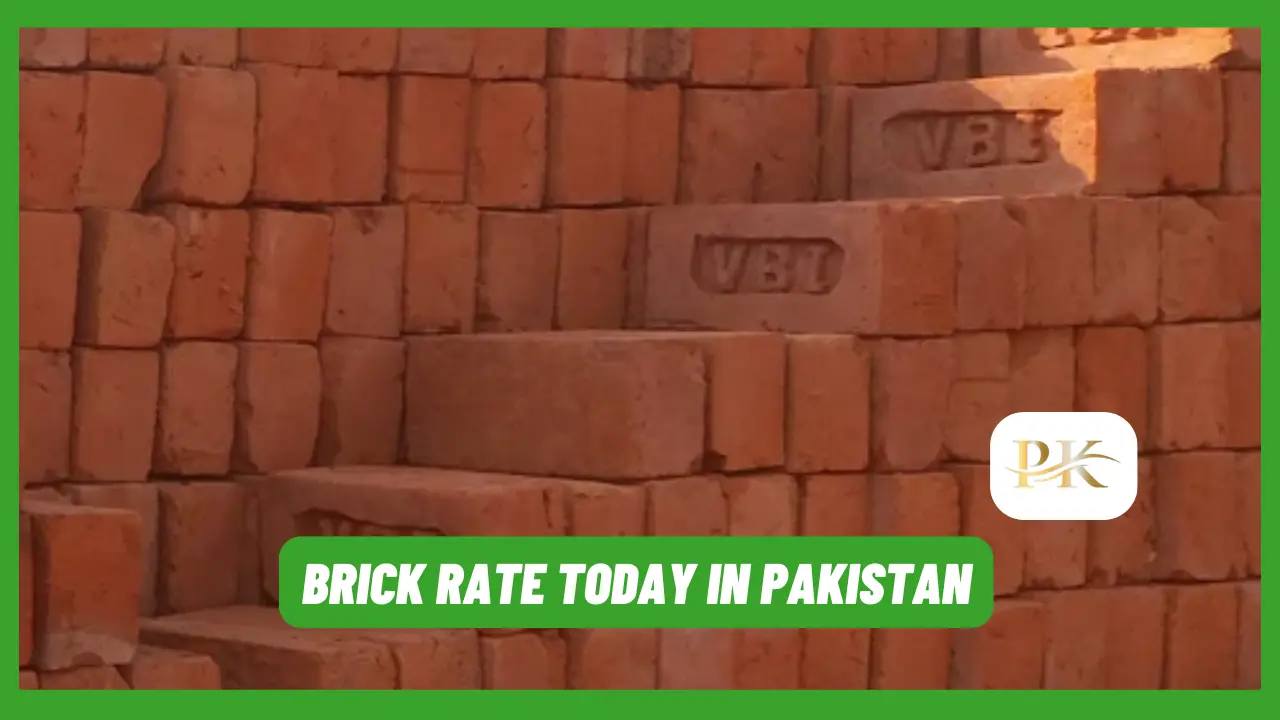Brick Rate in Pakistan: Today’s Construction Material Costs
Understanding the Brick Rate in Pakistan is essential for anyone involved in construction projects, whether for personal homes or commercial ventures. Brick prices directly impact your overall budget, making it crucial to stay informed about current rates and market trends.
Bricks play a vital role in Pakistan’s construction industry, serving as the foundation of buildings and infrastructure. Market dynamics, including demand, quality, and production costs, significantly influence brick rates, shaping the industry and the choices of builders.
Brick Rate in Pakistan Today
Brick prices in Pakistan vary depending on their type, quality, and region. Below is a table highlighting the current rates for different categories of bricks:
Brick Rate Today
| Type of Brick | Price per Brick (PKR) | Price per 1,000 Bricks (PKR) | Price for 3,000 Bricks (PKR) |
|---|---|---|---|
| Fly Ash brick | 18 | 18,000 | 54,000 |
| Awwal tile bricks (A-grade) | 17 | 17,000 | 51,000 |
| B-grade brick (II-brick) | 14 | 14,000 | 42,000 |
| C-grade brick | 12 | 12,000 | 36,000 |
| Khingar brick | 15 | 15,000 | 45,000 |
| Awwal brick (machine-made) | 16 | 16,000 | 48,000 |
| A-class brick | 17 | 17,000 | 51,000 |
| Rora | 90/cubic ft. |
Also Visit: TR Gardar Rate in Pakistan
Types of Bricks Available in Pakistan
Pakistan offers a wide range of bricks to cater to various construction needs. Each type serves a specific purpose, ensuring builders can choose the best option for their projects.
Clay Bricks
- Traditional and widely used in construction.
- Known for their durability and affordability.
- Commonly used for walls, pavements, and structural foundations.
Fly Ash Bricks
- Made from the byproducts of coal combustion.
- Eco-friendly, lightweight, and cost-effective.
- Preferred for their smooth finish and reduced environmental impact.
Concrete Bricks
- Manufactured using cement, sand, and aggregates.
- Strong, uniform in shape, and highly durable.
- Ideal for load-bearing structures and modern construction.
Red Bricks vs. Ash Bricks
- Red Bricks: Traditional, sturdy, and heat-resistant.
- Ash Bricks: Sustainable, lighter, and more economical.
- Builders choose based on project needs, budget, and environmental considerations.

Environmental Concerns and Innovations in Brick Production
The brick industry in Pakistan faces significant environmental challenges due to the high carbon emissions from traditional kilns. Excessive use of raw materials like clay also depletes natural resources, impacting the ecosystem.
Innovations such as fly ash bricks and energy-efficient kilns are paving the way for sustainable practices. These advancements reduce environmental damage while offering cost-effective and eco-friendly alternatives for construction.
How to Choose the Right Brick for Your Project
Selecting the perfect brick is essential for ensuring durability, strength, and cost-effectiveness in your construction project. Here are some key factors to consider:
- Determine the Purpose: Decide whether the bricks are for load-bearing walls, pavements, or decorative purposes.
- Check the Quality: Look for uniform color, consistent size, and no visible cracks.
- Consider the Size: Ensure the bricks align with the standard size for efficient construction.
- Evaluate Durability: Test for strength by checking if the brick produces a metallic sound when struck.
- Compare Types: Choose between clay, fly ash, or concrete bricks based on your project’s needs and budget.
- Factor in Cost: Balance affordability with quality to avoid compromising on the structure’s longevity.
- Environmental Impact: Opt for eco-friendly options like fly ash or concrete bricks to reduce your carbon footprint.
- Regional Availability: Choose bricks that are readily available in your area to minimize transportation costs.
Also Visit: Marble Price in Pakistan
Overall Conclusion
Understanding the brick rate in Pakistan and the factors influencing it is essential for managing construction costs effectively. With a variety of bricks available, choosing the right one ensures durability and meets project requirements.
By staying updated on market trends and exploring eco-friendly options, builders can make sustainable choices. Planning wisely and selecting quality materials contribute to the success of any construction project.






